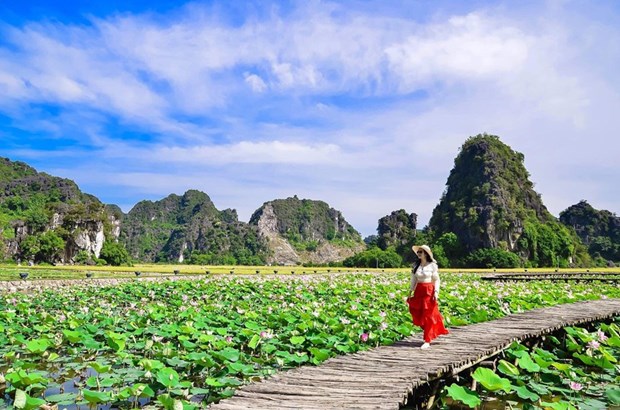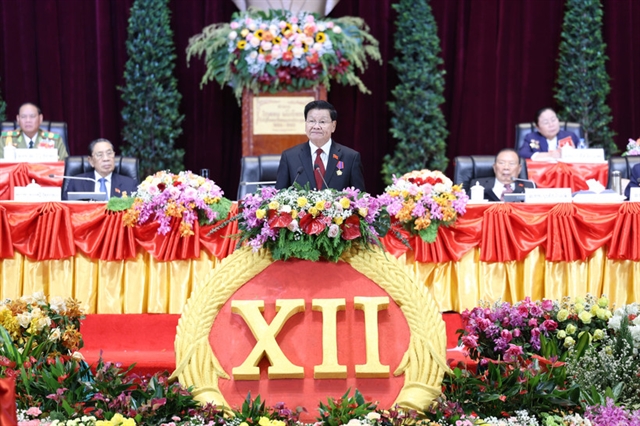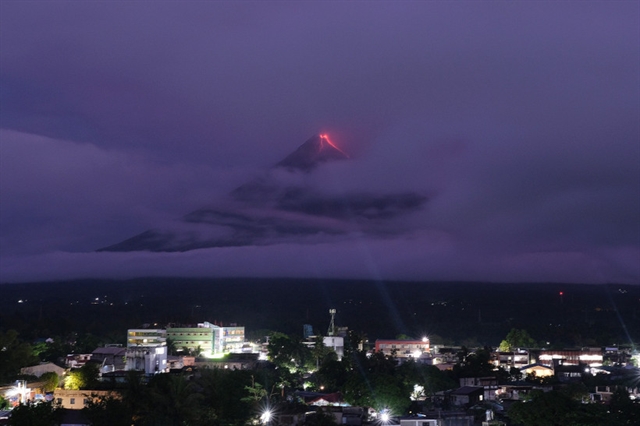 Society
Society

Agricultural and rural tourism is gradually becoming a sustainable economic development trend in northern Ninh Bình Province, helping exploit rural values and preserve traditional culture.

|
| Natural beauty and lotus pond are ones of the attractions in the northern province of Ninh Bình. — VNA/VNS Photo |
NINH BÌNH — Agricultural and rural tourism is gradually becoming a sustainable economic development trend in the northern province of Ninh Bình, helping take advantage of rural values and preserve traditional culture.
The tourism model has also generated stable jobs for hundreds of workers in the countryside areas.
In Đông Sơn Commune of Tam Điệp City, home to several historical sites and natural caves, co-operatives and farm owners have worked together in recent years to set up tours with homestays, gardening and fishing to tap local strengths.
The commune has become an attractive destination of the province, attracting a large number of tourists every year.
Trịnh Văn Tiến, director of Tam Điệp Agriculture and Tourism Co-operative, said the co-operative has 10 members that produce and trade Ninh Bình’s speciality plants and animals.
Last year, the members decided to work with other farms to develop tourism, Tiến said.
“Tourists were taken to visit historical sites and natural beauty places and experience farm work such as animal rearing and planting, and then enjoy foods produced by the co-operative,” Tiến said.
With efforts in the development of agriculture and tourism, the co-operative's tourism model has been recognised with 4-star certification from the One Commune, One Product (OCOP) programme.
Hoa Lư District has also enjoyed success by shifting from rice planting to tourism since 2019.
The district has more than 3,000ha of rice farmland, however, many areas are at the foot of the mountain and wetland areas that make it difficult to cultivate rice, leading to some households no longer planting rice.
To overcome the situation of abandoning fields in some localities and improve the production value in the area, from the beginning of 2019, the district People's Committee has converted 6.2ha of inefficient rice cultivation land to plant Japanese-bred lotus combining breeding to develop ecotourism in Ninh Hải, Ninh Xuân and Trường Yên communes.
According to Vũ Văn Thông, director of the Hoa Lư Agriculture and Rural Development Department, growing Japanese lotus combined with fish breeding had not only brought high economic efficiency but also attracted many tourists to visit the lotus ponds.
The model had also helped local people earn more income from renting outfits to tourists for photography at the lotus ponds, Trường said.
Hoa Lư District has been expanding the model in the communes of Ninh Xuân, Ninh Hải, Ninh Thắng and Trường Yên.
According to a provincial official, combining tourism with agriculture was first formed and put into operation in Vân Long Wetland Nature Reserve in Gia Viễn District.
This started as tourists visited Vân Long Wetland Nature Reserve and wanted to stay at local people’s houses to explore rural lives, he said.
The model has spread to many localities throughout the province in Gia Viễn and Hoa Lư districts and Tam Điệp City.
“Ninh Bình is a purely agricultural province, with more than 70 per cent of the population living in rural areas, possessing a long history of agricultural ecological production,” said Phạm Duy Phong, vice director of the Ninh Bình Tourism Department.
The province has many fields implementing new farming models attracting domestic and foreign tourists for taking photographs such as Đồng Giao pineapple field, Ninh Phúc flower field and Đông Sơn peach blossom village, he said.
With those advantages, the development of agricultural and rural tourism is becoming a trend of sustainable economic development in the province.
“In the past, people lived on cultivation and animal breeding,” said Vũ Nam Tiến, director of the Department of Agriculture and Rural Development.
“Thanks to tourism development, people can earn VNĐ6 million (US$260) per month from tourism services,” said Tiến.
To further develop rural tourism in the next period, the province needs plans and guidelines to connect people, travel businesses and local authorities to create high-quality tourism products, Tiến said.
Local authorities should accelerate agricultural and rural development in association with tourism planning including investment in traffic infrastructure and tourism promotion campaigns, he said.
Local people needed to increase the application of science and technology in production but still retain traditional culture to give a good impression to tourists.
Building community and agriculture-based tourism associated with environmental protection to attract domestic and international tourists was also important, he added. — VNS




